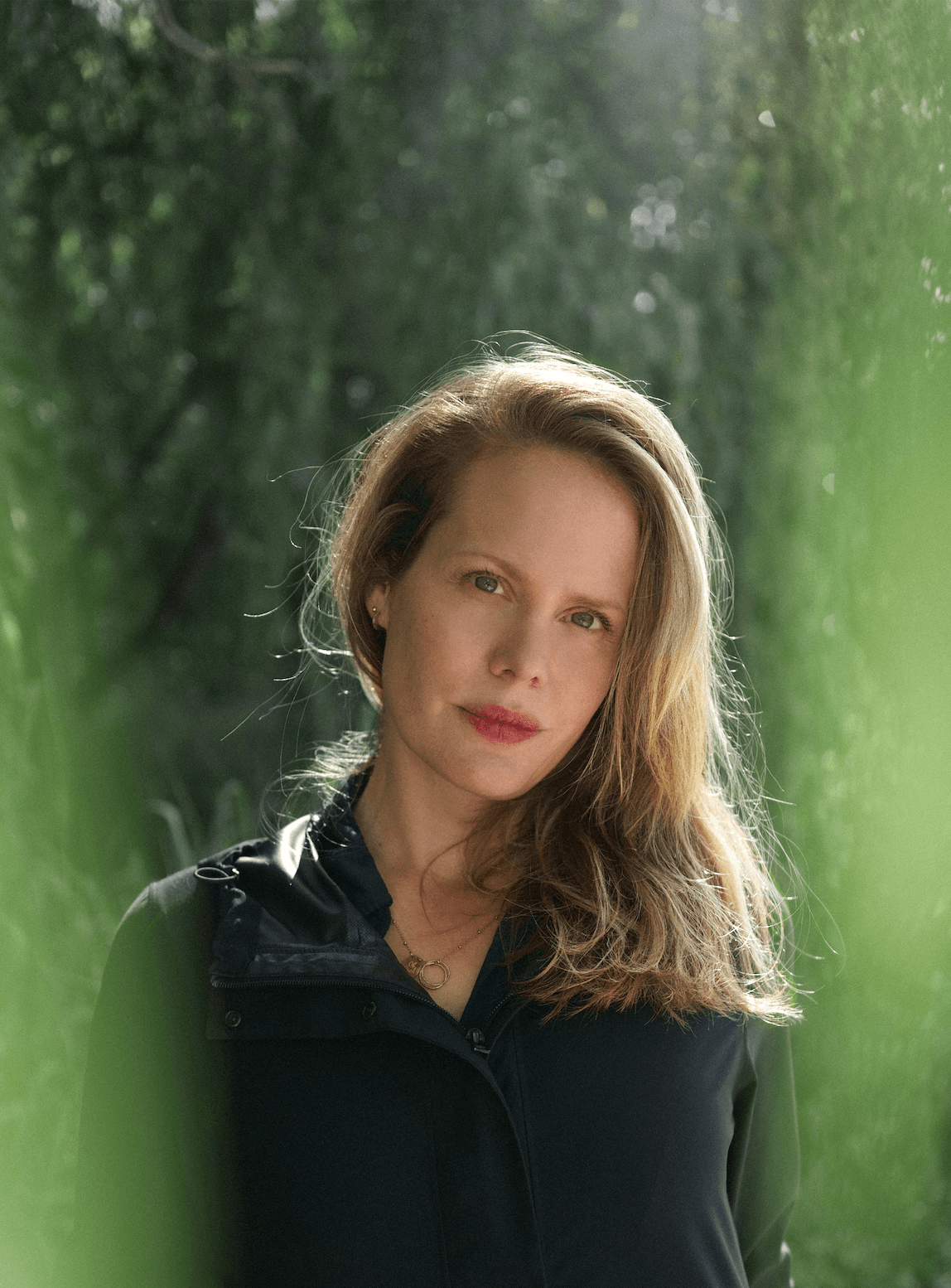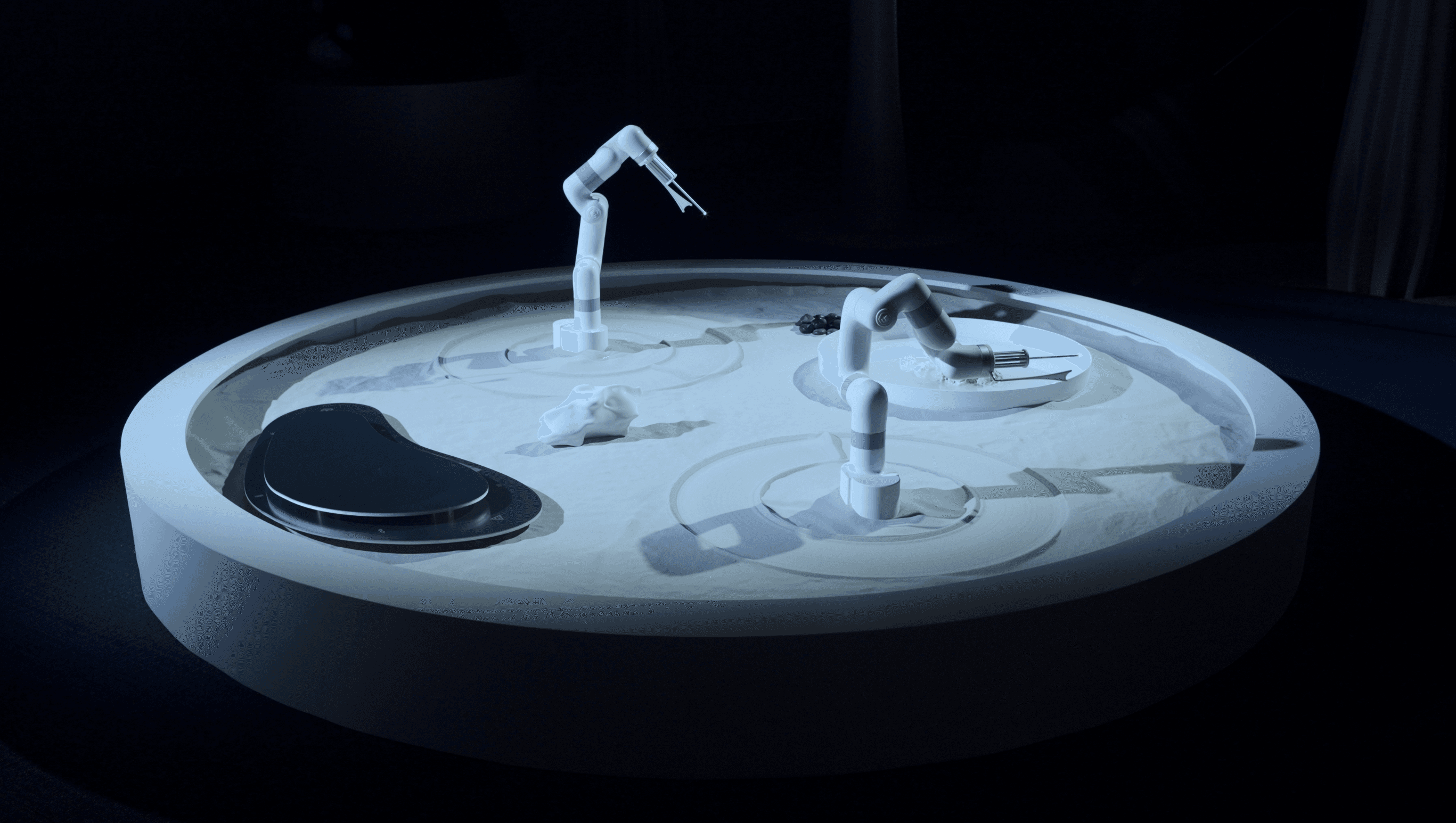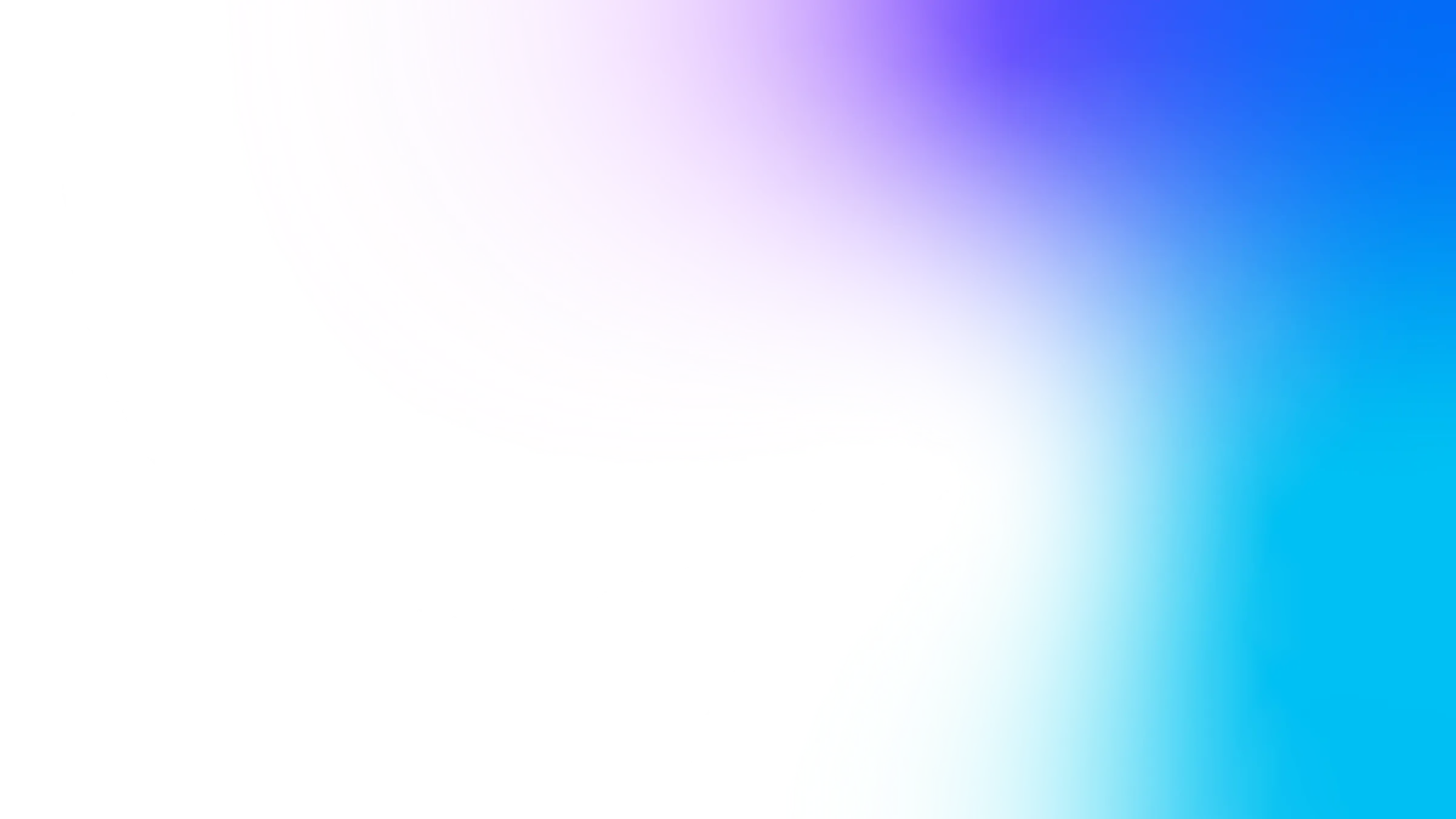
Heleen Blanken
Interdisciplinary artist
Heleen Blanken is an interdisciplinary artist based in Amsterdam, working at the intersection of installation art, new media, cinematography, scenography, and sculpture. She studied Fine Arts at the Gerrit Rietveld Academy.
Her artistic practice explores the complex relationship between humanity and the natural world, examining how we perceive and interact with nature. By navigating traditional dichotomies such as organic versus artificial and analog versus digital, her work raises questions about our understanding of the natural environment and envisions speculative, futuristic narratives.
Photo of work
SINGULARITY GARDEN 2025
Singularity Garden is a robotic zen garden that explores the delicate balance between harmony, repetition, and the quiet presence of technology. The installation consists of two circular islands, each with its own identity, yet inherently connected. Robotic arms trace endless patterns in the sand…calm, precise, and unchanging. Their movements suggest a kind of peace, but also raise questions about purpose and autonomy.
The garden draws from the idea of an advanced artificial superintelligence, a being that has evolved beyond human understanding. Its origins and intentions remain unclear. Was it created for us, or has it outgrown that purpose?
While the atmosphere feels serene and almost otherworldly, there's an underlying sense of detachment. The garden is beautiful, but also strangely still, as if caught in a moment outside of time. It gently unsettles while inviting reflection.
Through this meeting of nature and machine, ritual and automation, the work encourages visitors to consider their own path toward meaning and fulfillment, and the growing role of technology in shaping not just our world, but our inner lives.



SINTOPIUM 2023
The work makes visible what is not immediately apparent to the naked eye: the natural harmony of waves and patterns. In the midst of the forest on Vlieland, a serene space emerges where light, reflections, and the refraction of light play a central role. The architectural structure is formed around a prismatic window and a kinetically undulating surface, breaking and distorting the world within and around the artwork.
The inspiration for this structure originates from the sinus wave, a fundamental mathematical concept that helps us understand cyclical aspects in nature, such as light waves, water waves, sound waves, seismic waves, and atomic movement. The building's roof is lowered and slowly moves up and down. When the sun is directly above the space, the color variations and the beauty of broken light become visible, presenting natural phenomena synthetically through the kinetic element.
ABIOSIS 2022
Abiosis refers to 'the absence of life.' This project is grounded in the primordial soup theory, which posits that life can emerge from non-living materials under specific conditions. The conceptual translation at Floriade Expo of this theory is manifested through a mist installation, a field of bubbles in water, and a mechanical creature symbolising the origins of life. Exploring our position in the universe, the project raises questions about the potential of future technologies to generate new life and whether technology ultimately aligns with the natural order.

HABITAT 2020
The environmental crisis and the destruction of habitats force us to imagine a future in which nature can be remembered in digital form. Natural history museums aim to preserve nature physically by fixing it in time and space. How might the archiving of nature evolve in a digital context? Could digitalisation bring us even closer to nature? In the data-driven projection, Habitat, 3d scans of organic artefacts such as stones, fossils and corals from Leiden’s Naturalis Biodiversity Center are transformed into a game-like, meditative environment. Human’s impact is not always immediately visible. Walk among the motion-sensor sculptures to see how your presence influences the work and generate your own unique audio-visual experience.




